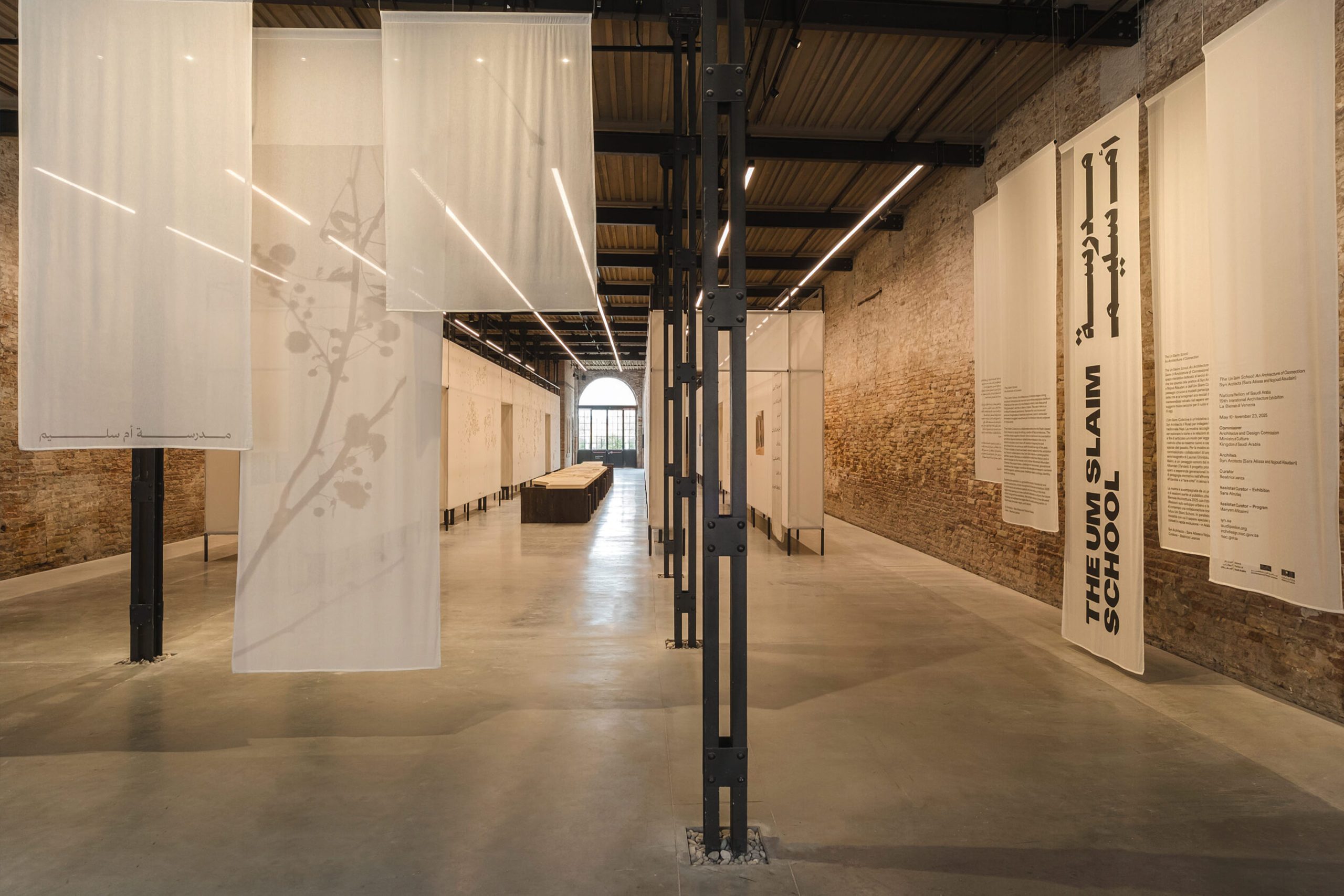The Um Slaim School: An Architecture of Connection represents the National Pavilion of Saudi Arabia at the 19th International Architecture Exhibition of La Biennale di Venezia. The project is conceived by Syn Architects, founded by Saudi architects Sara Alissa and Nojoud Alsudairi. It transforms the Saudi Pavilion into an exhibition and an experimental educational platform, rooted in Riyadh’s architectural and social fabric. Curated by Beatrice Leanza and Sara Almutlaq, the showcase is on display at the Arsenale and will run through 23 November 2025.
The installation unfolds as a “building within a building”. It is constructed from scaffolding and draped with layered textiles embroidered with maps, sketches, and images of Najdi neighbourhoods. These layers are metaphors for memory, identity, and the continuity of place. A long table that runs through the centre serves as an urban map and a communal gathering point, reinforcing the exhibition’s focus on dialogue and shared reflection.

The pavilion interweaves historical materials with contemporary art pieces: photographs, architectural models, films, oral histories, and drawings. The notable contributors include Mohammed Alhamdan (7amdan), Maha Malluh, Laurian Ghinițoiu, and Mansour Alsofi. Alhamdan displays a sound installation that blends urban field recordings with traditional chants. Malluh’s artwork, Tamwenat Addirah, evokes neighbourhood identity through curated market objects.
Ghinițoiu’s photos capture the daily rhythms of central Riyadh, while Alsofi’s images document the city’s modernist and postmodernist landmarks. The pavilion also presents archival documentation of the Shamalat Cultural Centre in Diriyah, a restored mud-brick building repurposed as a community hub.

Originating from the Um Slaim Collective, the Um Slaim School extends beyond exhibition-making to propose a new model of architectural pedagogy for Saudi Arabia. Launched in 2021, it embraces Najdi vernacular architecture as a framework for understanding contemporary urbanism, moving towards situated, community-based learning.
Accompanying the pavilion is a public programme that runs from June to November, BUILT/UNBUILT — Relational Pedagogies and Participatory Spatial Practice. It features lectures, workshops, performances, film screenings, readings, and walks, fostering reflection on architecture’s role in education, memory, and community resilience. The programme’s outcomes will be compiled in a publication.

The Um Slaim School reframes Najdi architecture not as a static relic but as a living source for contemporary design. It transforms the Saudi Pavilion into a space where architecture becomes a bridge between past and future, local and global, built form and shared experience.
To learn more about The Um Slaim School: An Architecture of Connection, please visit the official website of the National Pavilion of Saudi Arabia.
You might also be interested in exploring Architectures of the In-Between at Aisha Alabbar Gallery and Pressure Cooker by the National Pavilion UAE at the International Architecture Exhibition of La Biennale di Venezia.





